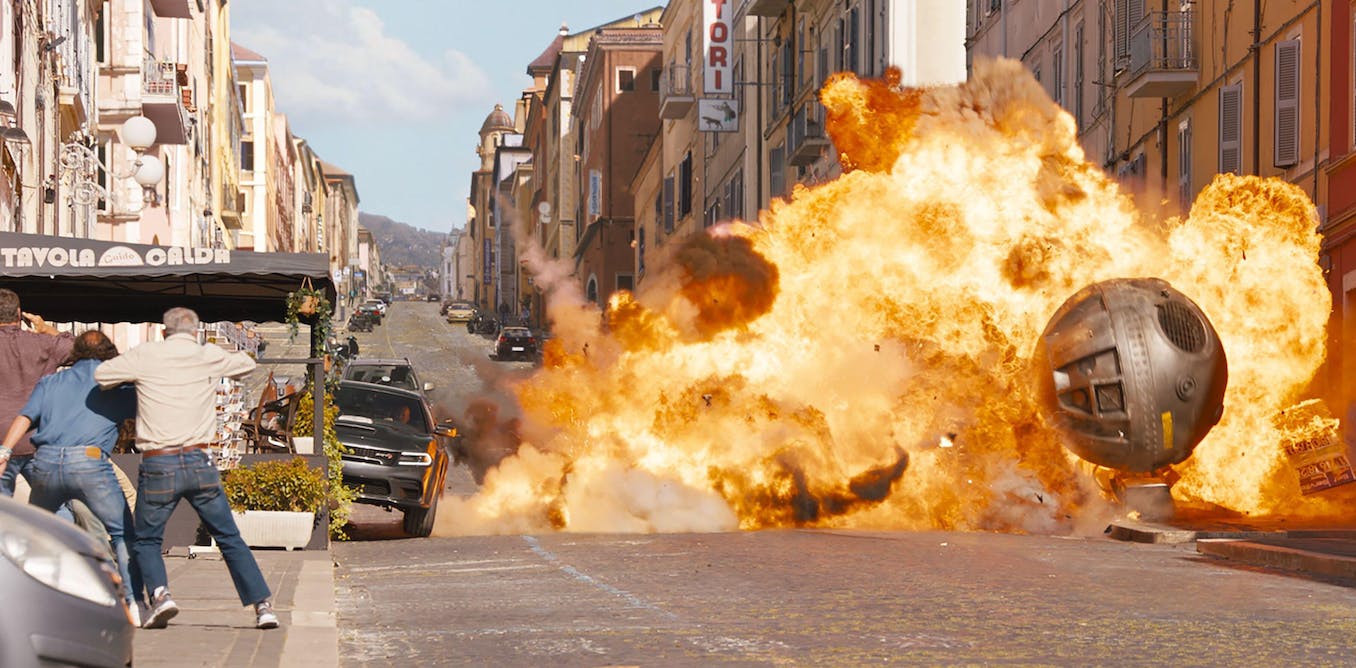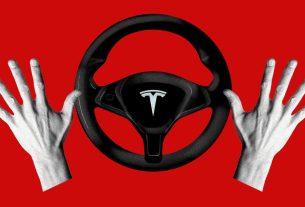Exploding cars may be entertaining to watch in action films. But cars erupting into fireballs when they crash or tumble down a mountainside is one of the most common and scientifically preposterous movie tropes.
With the release of Fast X, the latest in the Fast & Furious franchise, on May 19 2023, it’s time to debunk the myth of the exploding car.
Cars never explode under these circumstances and rarely catch fire. That’s unless you were unfortunate enough to be driving a Ford Pinto or Chevrolet Malibu in the 1970s. Both manufacturers cut corners in the production process and the result was poorly designed fuel tanks that were vulnerable to catching alight, often trapping the occupants inside.
Even when racing driver Romain Grosjean crashed at 140 mph at the 2020 Bahrain Grand Prix, his vehicle caught fire but did not explode.
Petrol vapour is only explosive in air (which is 20% oxygen) and when under pressure. Liquid petrol isn’t explosive but the vapour can catch fire. Vapour can escape from the fuel tank when you unscrew the cap. But tanks have a system in which the pressure is relieved without venting the vapour. A full fuel tank is safer than you might think since there is no air inside it and so no oxygen.
In fact, liquid petrol can be difficult to ignite even when it comes into contact with a flame.
What an explosion needs
Explosions are normally caused by a reaction where one or more solids or liquids react and produce a corresponding amount of gas.
A gas occupies much more space (800 times the volume of liquid or solid) than the equivalent amount of solid or liquid. The force generated by the rapidly expanding gas creates the explosion.
Shrapnel is added to explosive weapons of war, which is propelled by the expanding gas.
Petrol doesn’t detonate on its own, but explodes with oxygen when it is in its gas form, is hot enough (about 257℃) and in the presence of a flame or spark.
Imagine watching someone on a hot day filling their car. Often you see a shimmering effect near the tank filler. This is petrol vapour. The “no smoking” instruction on petrol stations signage and painted on oil tankers is about eliminating one of the three requirements for petrol to catch fire.
Petrol is a high energy compound. These compounds release a lot of energy when they react with other substances. When petrol comes into contact with oxygen and burns, it produces low energy compounds (water and CO₂). The difference in energy between those compounds is seen and heard as sound, heat and light and expansive force.
In order for petrol to explode (rather than just burn) it needs to be under pressure, in the gas form, and have enough oxygen and a source of external energy such as a spark or flame to start the reaction.
Exploding cars
In a car engine, the explosion takes place in a cylinder. The piston compresses the air/petrol mixture to create the high-pressure conditions needed for an explosion. When a gas is compressed, it gets hot. That’s why the tip of a bicycle pump gets hot when you pump your tyres up. As the piston compresses the air/fuel mixture, the pressure and temperature rises.
The spark plug provides the small amount of energy required to make the reaction happen. This process happens several thousand times per minute in car engines.
Petrol and diesel can only explode when under pressure and mixed with air and in the case of petrol, have a small amount of energy added in the form of a spark or a flame. Engines pressurise the fuel/air mixture in the cylinder and so produce small, confined explosions which turn a crankshaft and drive the wheels.
Diesel is less flammable. Diesel engines use a higher boiling point fuel which spontaneously combusts under pressure, which is why diesel engines don’t need spark plugs. Diesel engines also cycle at a lower rate compared to petrol engines, which is why they last longer and offer greater fuel economy.
When cars are involved in collisions, fuel lines are often torn and petrol leaks out onto a hot engine. Liquid petrol can catch fire in the presence of air. But it can’t explode because it’s not under pressure and is in the liquid phase rather than a vapour.
In a car crash, diesel or petrol may occasionally catch fire, but there is no mechanism for creating the high pressures required for them to explode, so they don’t.



